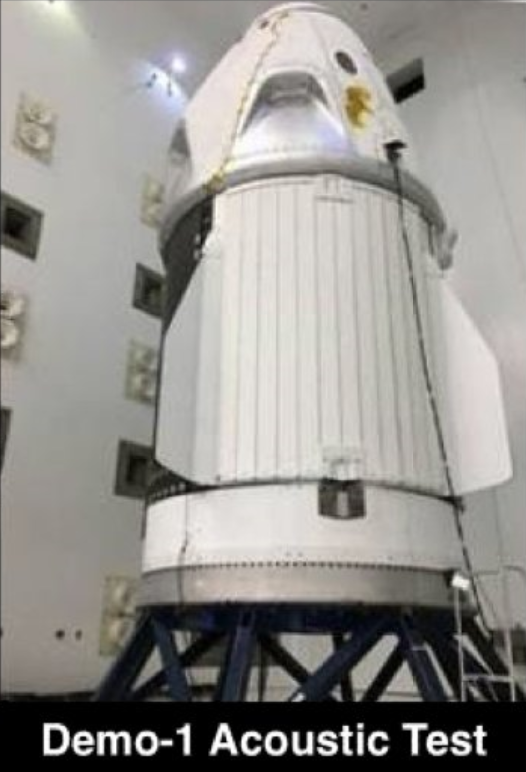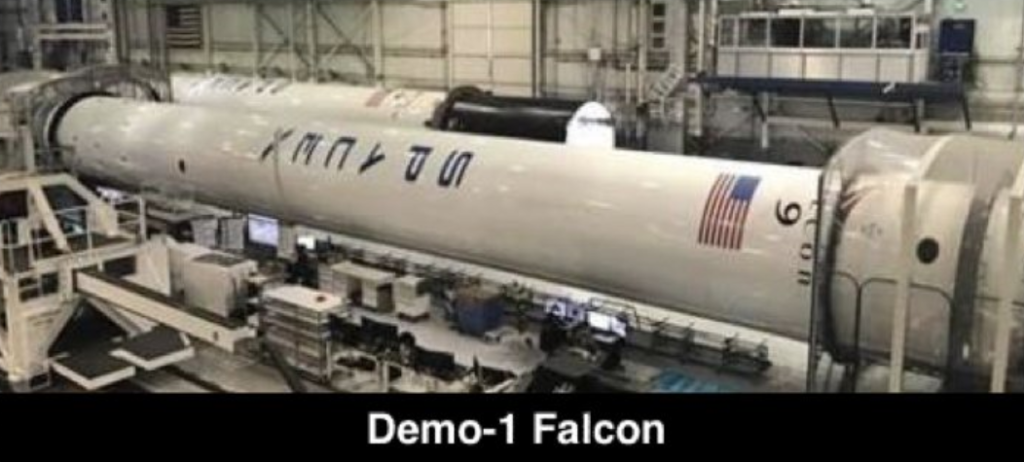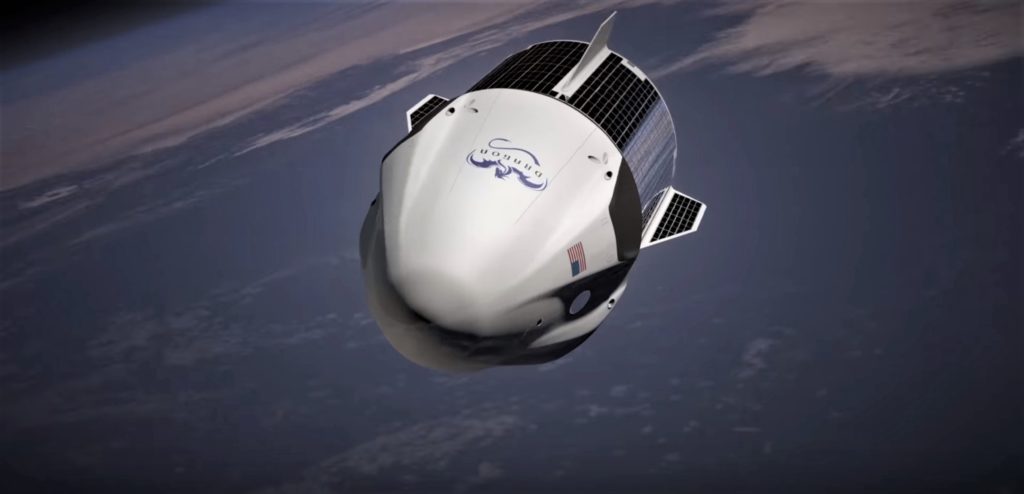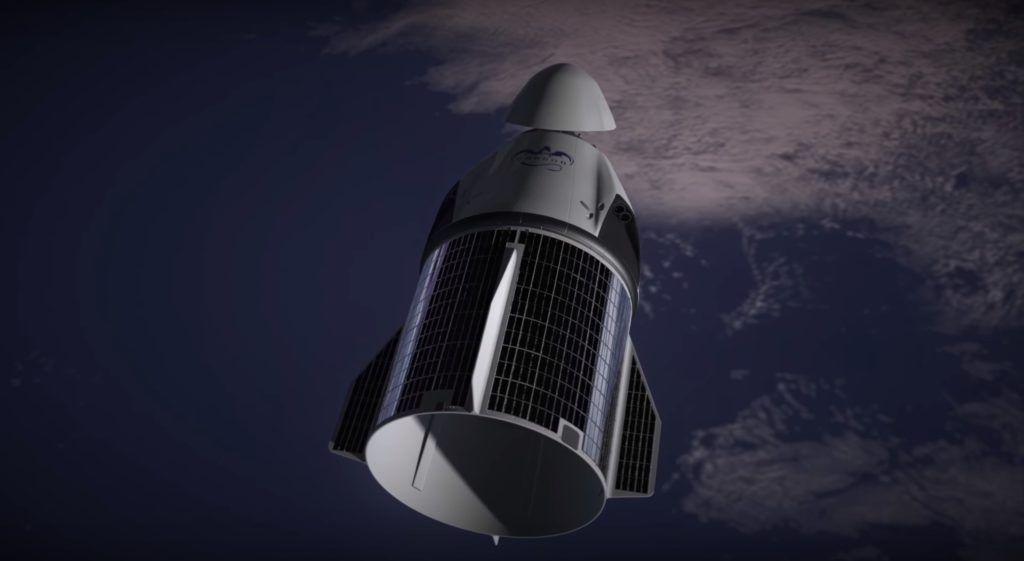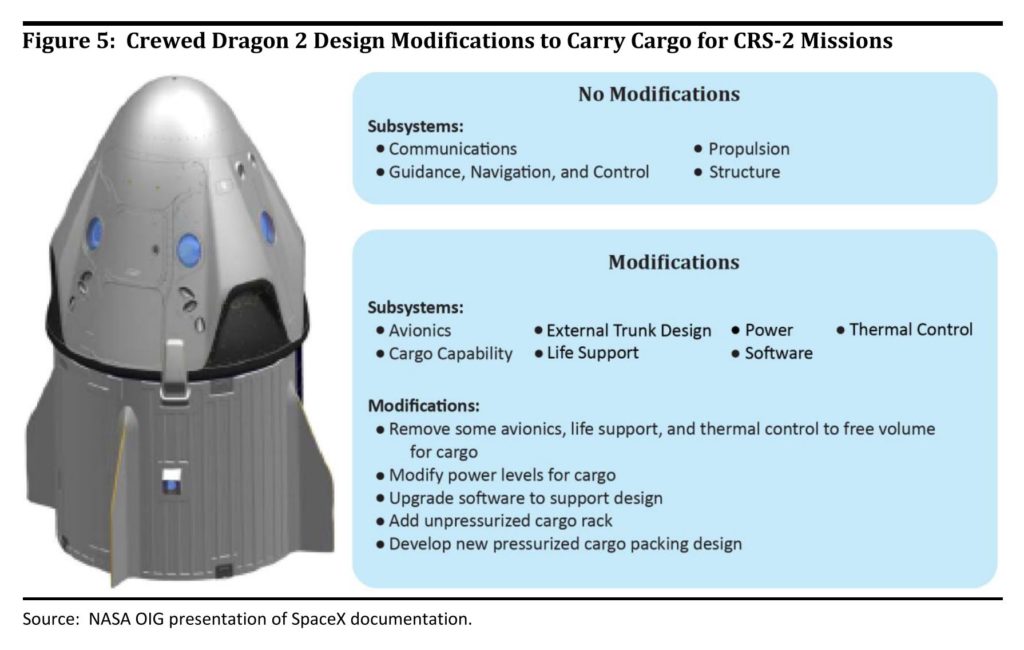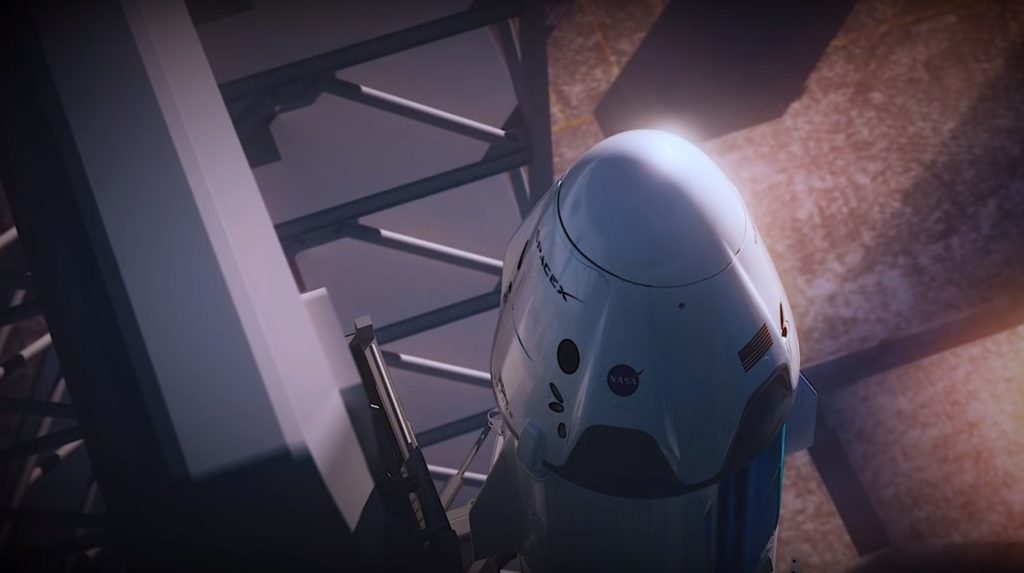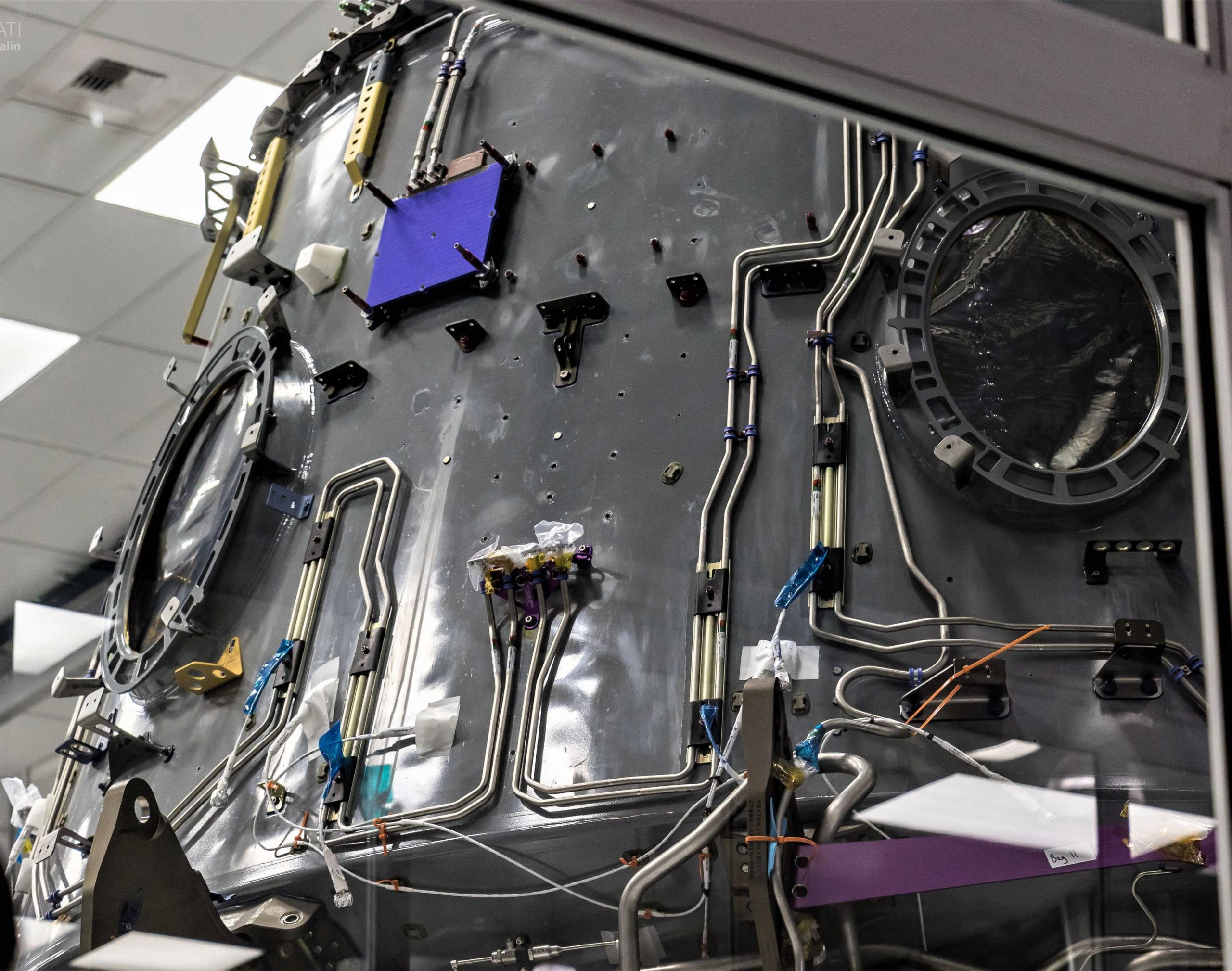
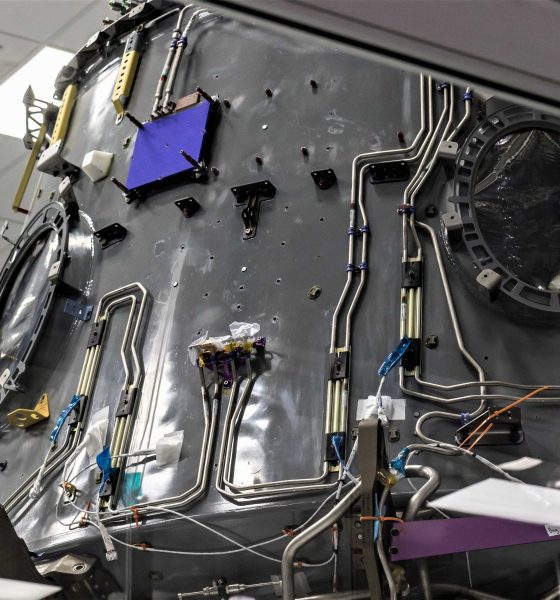
News
SpaceX has no plans to reuse Crew Dragon spaceships on NASA astronaut launches
According to program manager Kathy Lueders, SpaceX has chosen against reusing its upgraded Crew Dragon spaceships on NASA Commerical Crew Program (CCP) launches, even though NASA itself explicitly provided both CCP providers (Boeing and SpaceX) the option to propose reflights of crew capsules.
In fact, Boeing did just that with their CST-100 Starliner spacecraft, proposing to land Starliners on land (using airbags) and reuse the capsules repeatedly, up to 10 times each. While there is next to no official information on the matter, the question of what SpaceX is planning to do with its flight-proven Crew Dragon spacecraft is well worth puzzling over.
The Crew Dragon capsule for the SpaceX DM-1 mission will be launch ready by the end of September. pic.twitter.com/xsGw9fWkUG
— Michael Baylor (@MichaelBaylor_) August 27, 2018
The future of flight-proven Dragon 2s
Speaking at the most recent (August 27) NASA Advisory Council meeting, Lueders specifically stated that SpaceX had proposed “a new vehicle every time for [NASA]”, although NASA specifically provided the option for either new or reflown hardware, similar to Commercial Cargo where SpaceX already routinely reflies both Falcon 9s and Cargo Dragons on official NASA resupply missions.
The fact that SpaceX already routinely reuses Cargo Dragons – and even does so atop flight-proven Falcon 9 rocket boosters – adds additional intrigue to this seemingly odd decision. However, in the context of other near-term plans for other Dragon-related activities, SpaceX’s choice to not (at least in the near-term) refly Crew Dragon capsules for crewed NASA launches makes more than a little sense.
- DM-1 seen conducting acoustic testing in Ohio. (SpaceX)
- Falcon 9 B1051, DM-1’s rocket of choice, seen during construction in SpaceX’s Hawthorne factory. (SpaceX)
- (SpaceX)
- (SpaceX)
The single most obvious explanation can be found in SpaceX’s next Commercial Resupply Services contract (CRS-2), a similar follow-up to the CRS-1 contract SpaceX is currently launching Cargo Dragons under. Although SpaceX offered its Dragon 1 (already flying) as an option, NASA sided with Dragon 2 thanks to a number of unique and valuable capabilities offered by the upgraded craft. While no official detail has been released by NASA on the gritty specifics of those CRS-2 contracts, an April 2018 report from the Office of the Inspector General (OIG) offers a bit more insight into SpaceX’s plans.
Although the OIG report in question never specifically states it, some of the language used to describe Dragon 2’s cargo configuration does seem to imply that Cargo Dragon 2s will predominately (if not exclusively) be derived as slightly-modified Crew Dragon capsules, seemingly indicating that SpaceX’s CRS-2 missions may only ever launch flight-proven Crew Dragon capsules. Depending on the extent of the disassembly required to remove the components described below, all other “modifications” are essentially one-and-done after the software and additional designs are completed. As such, it should be relatively straightforward to modify the vehicles between Crew and Cargo configurations.
- An overview of the expected modifications needed to turn a Crew Dragon into a Cargo Dragon 2. (NASA OIG)
This strategy would make a lot of sense: by using its Commercial Crew contract as a means to fund the construction of brand new Crew Dragon capsules and Falcon 9 rockets and then using those once flight-proven rockets and spacecraft for other NASA cargo launches, general commercial missions, and maybe even low Earth orbit tourism, SpaceX can likely extract as much value and utility as possible from that hardware.
Despite the fact that NASA in this situation would effectively be carrying a significant portion of SpaceX’s non-BFR production-related capital expenditure, the company’s CRS-2 and Commercial Crew contracts place its cargo and crew launch costs far below those of competitors Boeing, Orbital ATK (now Northrop Grumman Innovation Systems), and Sierra Nevada. Overall, SpaceX’s launch costs to NASA range anywhere from 40-75% less than its three competitors’ best offerings, essentially invalidating any nitpicking over slight cost increases from CRS-1 to CRS-2.
Even if SpaceX never ends up reusing Crew Dragons on crewed NASA launches, NASA is still likely to benefit from lower costs derived by the partial modification and reuse of those same capsules and Falcon 9 boosters on CRS-2 cargo resupply missions.
For prompt updates, on-the-ground perspectives, and unique glimpses of SpaceX’s rocket recovery fleet check out our brand new LaunchPad and LandingZone newsletters!

News
Tesla is not sparing any expense in ensuring the Cybercab is safe
Images shared by the longtime watcher showed 16 Cybercab prototypes parked near Giga Texas’ dedicated crash test facility.

The Tesla Cybercab could very well be the safest taxi on the road when it is released and deployed for public use. This was, at least, hinted at by the intensive safety tests that Tesla seems to be putting the autonomous two-seater through at its Giga Texas crash test facility.
Intensive crash tests
As per recent images from longtime Giga Texas watcher and drone operator Joe Tegtmeyer, Tesla seems to be very busy crash testing Cybercab units. Images shared by the longtime watcher showed 16 Cybercab prototypes parked near Giga Texas’ dedicated crash test facility just before the holidays.
Tegtmeyer’s aerial photos showed the prototypes clustered outside the factory’s testing building. Some uncovered Cybercabs showed notable damage and one even had its airbags engaged. With Cybercab production expected to start in about 130 days, it appears that Tesla is very busy ensuring that its autonomous two-seater ends up becoming the safest taxi on public roads.
Prioritizing safety
With no human driver controls, the Cybercab demands exceptional active and passive safety systems to protect occupants in any scenario. Considering Tesla’s reputation, it is then understandable that the company seems to be sparing no expense in ensuring that the Cybercab is as safe as possible.
Tesla’s focus on safety was recently highlighted when the Cybertruck achieved a Top Safety Pick+ rating from the Insurance Institute for Highway Safety (IIHS). This was a notable victory for the Cybertruck as critics have long claimed that the vehicle will be one of, if not the, most unsafe truck on the road due to its appearance. The vehicle’s Top Safety Pick+ rating, if any, simply proved that Tesla never neglects to make its cars as safe as possible, and that definitely includes the Cybercab.
Elon Musk
Tesla’s Elon Musk gives timeframe for FSD’s release in UAE
Provided that Musk’s timeframe proves accurate, FSD would be able to start saturating the Middle East, starting with the UAE, next year.

Tesla CEO Elon Musk stated on Monday that Full Self-Driving (Supervised) could launch in the United Arab Emirates (UAE) as soon as January 2026.
Provided that Musk’s timeframe proves accurate, FSD would be able to start saturating the Middle East, starting with the UAE, next year.
Musk’s estimate
In a post on X, UAE-based political analyst Ahmed Sharif Al Amiri asked Musk when FSD would arrive in the country, quoting an earlier post where the CEO encouraged users to try out FSD for themselves. Musk responded directly to the analyst’s inquiry.
“Hopefully, next month,” Musk wrote. The exchange attracted a lot of attention, with numerous X users sharing their excitement at the idea of FSD being brought to a new country. FSD (Supervised), after all, would likely allow hands-off highway driving, urban navigation, and parking under driver oversight in traffic-heavy cities such as Dubai and Abu Dhabi.
Musk’s comments about FSD’s arrival in the UAE were posted following his visit to the Middle Eastern country. Over the weekend, images were shared online of Musk meeting with UAE Defense Minister, Deputy Prime Minister, and Dubai Crown Prince HH Sheikh Hamdan bin Mohammed. Musk also posted a supportive message about the country, posting “UAE rocks!” on X.
FSD recognition
FSD has been getting quite a lot of support from foreign media outlets. FSD (Supervised) earned high marks from Germany’s largest car magazine, Auto Bild, during a test in Berlin’s challenging urban environment. The demonstration highlighted the system’s ability to handle dense traffic, construction sites, pedestrian crossings, and narrow streets with smooth, confident decision-making.
Journalist Robin Hornig was particularly struck by FSD’s superior perception and tireless attention, stating: “Tesla FSD Supervised sees more than I do. It doesn’t get distracted and never gets tired. I like to think I’m a good driver, but I can’t match this system’s all-around vision. It’s at its best when both work together: my experience and the Tesla’s constant attention.” Only one intervention was needed when the system misread a route, showcasing its maturity while relying on vision-only sensors and over-the-air learning.
News
Tesla quietly flexes FSD’s reliability amid Waymo blackout in San Francisco
“Tesla Robotaxis were unaffected by the SF power outage,” Musk wrote in his post.

Tesla highlighted its Full Self-Driving (Supervised) system’s robustness this week by sharing dashcam footage of a vehicle in FSD navigating pitch-black San Francisco streets during the city’s widespread power outage.
While Waymo’s robotaxis stalled and caused traffic jams, Tesla’s vision-only approach kept operating seamlessly without remote intervention. Elon Musk amplified the clip, highlighting the contrast between the two systems.
Tesla FSD handles total darkness
The @Tesla_AI account posted a video from a Model Y operating on FSD during San Francisco’s blackout. As could be seen in the video, streetlights, traffic signals, and surrounding illumination were completely out, but the vehicle drove confidently and cautiously, just like a proficient human driver.
Musk reposted the clip, adding context to reports of Waymo vehicles struggling in the same conditions. “Tesla Robotaxis were unaffected by the SF power outage,” Musk wrote in his post.
Musk and the Tesla AI team’s posts highlight the idea that FSD operates a lot like any experienced human driver. Since the system does not rely on a variety of sensors and a complicated symphony of factors, vehicles could technically navigate challenging circumstances as they emerge. This definitely seemed to be the case in San Francisco.
Waymo’s blackout struggles
Waymo faced scrutiny after multiple self-driving Jaguar I-PACE taxis stopped functioning during the blackout, blocking lanes, causing traffic jams, and requiring manual retrieval. Videos shared during the power outage showed fleets of Waymo vehicles just stopping in the middle of the road, seemingly confused about what to do when the lights go out.
In a comment, Waymo stated that its vehicles treat nonfunctional signals as four-way stops, but “the sheer scale of the outage led to instances where vehicles remained stationary longer than usual to confirm the state of the affected intersections. This contributed to traffic friction during the height of the congestion.”
A company spokesperson also shared some thoughts about the incidents. “Yesterday’s power outage was a widespread event that caused gridlock across San Francisco, with non-functioning traffic signals and transit disruptions. While the failure of the utility infrastructure was significant, we are committed to ensuring our technology adjusts to traffic flow during such events,” the Waymo spokesperson stated, adding that it is “focused on rapidly integrating the lessons learned from this event, and are committed to earning and maintaining the trust of the communities we serve every day.”
